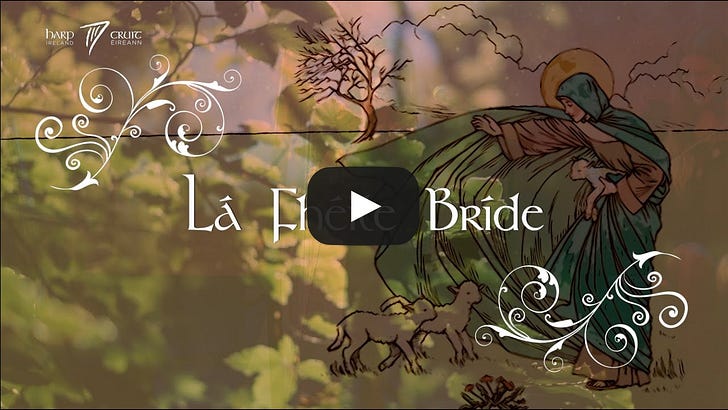Lá Fhéile Bríde Shona Daoibh 2025
Bríd's Day, the bringer of spring—Chandeleur, the return of the light
The first, or second of February is a special day in both my native and adopted cultures. My native culture is that of Québec—family, music, language, food all mixed together in my childhood memories and in the things of myself that I brought to my adopted culture, Ireland. There is a great deal of overlap.
Family is a big thing in Québec culture, as it is in Ireland. Both cultures actually share a significant body of music, largely owing to the massive immigration of Irish to Canada during the famine years of the 19th century.
Even the two languages have connections. Irish is littered with French words that came over with the Norman Conquest in the 12th century. Sugar=sucre=suicre; John=Jean=Seán, the original Irish word for John is Eoin; room=chambre=seomra; the list goes on.
This year I found a new connection, that between Bríd’s Day and Chandeleur (a feast day of candles, chandelles, aka Candlemas.)
Bríd, a goddess in pre-Christian Ireland whose feast day is Imbolc, the first day of spring, is the goddess of poets, smiths, of the household and domesticated animals, a woman of great wisdom and of healing. With the coming of Christianity, she became merged with St. Brigid, who shares the feast day and attributes of the goddess. Imbolc is the beginning of Spring, halfway between the Winter Solstice and the Spring Equinox. It is tied to lambing season and the preparations for spring sowing, so Bríd/Brigid is special to farmers.
Chandeleur shares the timing of Imbolc, a celebration of the lengthening days, although, I imagine that the weather patterns in French Canada were not as auspicious as those in the regions of France from which many of my ancestors emigrated, Brittany and Normandy, Nouvelle-Aquitaine. However, this day is also considered special for farmers in French Canada (not just Québec) and there are many practices and superstitions associated with Chandeleur.
On the 2nd of February, we make crêpes… thin pancakes like golden discs representing the sun and the return of warmth and light after the dark winter. One can “dress” the crêpes with all sorts of toppings—Nutella, lemon and sugar, honey. True Québecois style is maple syrup, especially from the family sugar bush (a stand or woods of maple sugar trees where the trees are tapped, the sap is harvested, boiled down in the cabane à sucre stirred with big wooden paddles, and “tested” by children dribbling spoons of hot syrup on clean snow to make toffee. That was always my favorite part of the whole production!
It is said that farmers who fail to make crêpes on Chandeleur risk a bad harvest. The first crêpe must be flipped (in the air) with one hand while the other holds a coin to ensure a bountiful harvest. I’m not sure which hand holds what, so do some research in case you use the wrong hand!
This Imbolc/Chandeleur we will be making crêpes. I have a little maple syrup left from the jar my cousin Gäetan gave me the last time I was at the Breton family Épluchette de Blé d’Inde. I will think of my family and friends wherever they may be and wish them the warmth and light of the returning sun and the spring to come.
If you want to hear more music celebrating Lá Fhéile Bríde, visit last year’s post that has videos of three amazing Irish musicians and their compositions for the first national holiday celebration of Brigid’s Day.
Salut! Sláinte!

